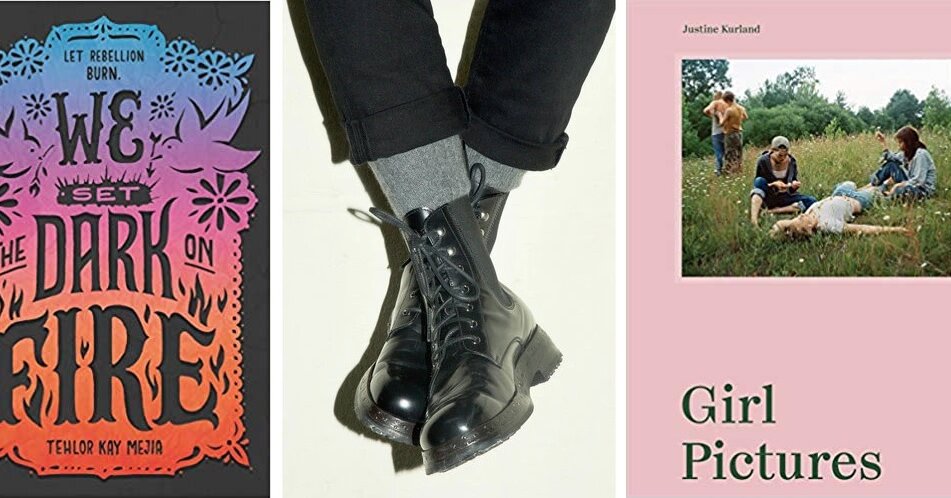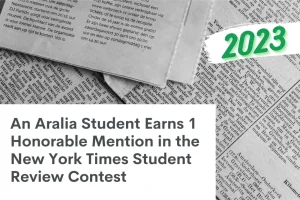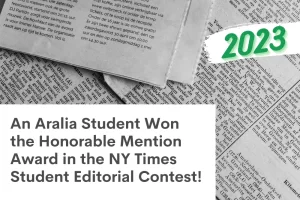LATEST UPDATE ▪️ COMPETITION INFORMATION
2026 Competition Deadline Announced!
New York Times My List Review Contest
The New York Times My List invites students to create a curated list of three to five works of art or cultural significance, grouped under any theme they choose. Participants can select from categories such as architecture, art, books, movies, music, podcasts, theater, TV shows, and more.
Interested in the competition?

Competition Overview
Students aged 13 to 19 around the world
Eligibility
Free
Entry Fee
January 14 to February 25, 2026
Competition Timeline
2 months after the contest has closed
Winners Announcement
📌 Note: Aralia is not the organizer of this competition. For official rules, deadlines, and updates, please refer directly to the competition organizer. Aralia provides listings and information about competitions for student reference. Aralia is an online education platform offering competition preparation classes to students worldwide.
Competition Details
1. Eligibility
This contest is open to students aged 13 to 19 in middle school or high school worldwide (high school postgraduate students who haven’t enrolled in college can also apply). Students attending their first year of a two-year CEGEP in Quebec Province can also participate. If students are directly related to New York Times employees or live in the same household as those employees, they are not eligible to enter this contest.
2. Subject Categories
Students are invited to create a list of 3–5 works of art or culture, grouped in any way they choose, and explain in 600 words or fewer why people should (or shouldn’t) check them out. Lists can cover any creative category The Times features—such as books, movies, music, restaurants, theater, video games, dance, TV, architecture, or art exhibitions.
Participants can work individually or in groups.
3. Final Submission Date
All entries must be submitted by February 25, 2026, at 11:59 p.m. Pacific Time, using the submission form provided on The New York Times website.
4. Prizes
Winners will have their work published on The Learning Network, providing exposure to a wide audience. Selected entries will also gain recognition for their writing skills and cultural insights.
Submission Details
1. How to Participate
To enter, students should:
- Choose a Theme: Select a theme or idea that ties the three to five works together. Your headline could focus on genres, categories, or specific attributes.
- Create a Compelling Introduction: Start your list with a catchy hook that immediately grabs the reader’s attention. Offer a brief introduction that explains why your chosen works matter and who your audience might be.
- Describe the Works: Provide short reviews of each item in your list. Explain how they connect to your theme, share your thoughts, and support your opinions with evidence. Be mindful to keep your content accessible and engaging to readers who may not have extensive background knowledge.
- Writing Guidelines:
- Limit your entire piece to 600 words, excluding the title.
- Ensure you personally experience the works before reviewing them—whether through viewing, reading, attending performances, or trying out specific activities.
- Submissions must be original and cannot be copied from existing reviews, articles, or AI-generated content.
2. Resources Available
The Learning Network provides helpful resources to guide participants through the writing process, including:
- Step-by-Step Guide: A comprehensive guide to help brainstorm ideas, develop your theme, and refine your list.
- Writing Prompts: A series of prompts to help jumpstart your creativity.
- Conversations with Journalists: A special edition where students can engage with Times critics, ask questions, and learn more about crafting compelling cultural lists.
How Will Your Work Be Judged?
The list has a clear overarching focus, which is conveyed in the headline and introduction, and developed throughout the entire piece.
The list includes three to five works that are thoughtfully chosen and clearly connected to the theme in some way.
The commentary for each work both ties the work to the theme and expresses the writer’s thoughts and opinions as it relates to that theme. Opinions are supported with relevant details from the work.
The list is written for a diverse cross-section of readers, taking into consideration the intended audience for the creative works.
The list has a strong voice that engages the reader. It uses language, style, and tone appropriate to its purpose, with correct grammar, spelling, and punctuation.
The list follows all contest guidelines, including remaining within the 600-word limit and addressing a category of creative work reviewed by Times critics.










